
Few things reveal someone’s age more than middle-aged men complaining about what's wrong with modern music: “Man, they just don’t make music like they used to!” While most of us tend to stick to what we know when it comes to music, there’s no denying that a lot has changed—sometimes for better, sometimes for worse. Rock is less guitar-driven, rap has shifted toward mumble rap and simpler cadences, genre blending has infiltrated all styles, and digital technology has had the biggest impact, completely reinventing how we produce, market, and consume music.
Among these developments, the biggest impact to music industry in the 21st century has been the rise of indie music and the widespread adoption of digital audio workstations (DAWs). Together, these advancements have transformed the sound of music across all genres, made production affordable and accessible, and dismantled traditional barriers to creativity and marketing. The old-timers are right—they definitely don’t make music like they used to! While some may feel nostalgic for the sounds of the past, it’s hard to deny the progress driven by these modern innovations.
The Music Industry Before the Internet
Before the 2000s and widespread use of the internet, the music industry operated in a dramatically different fashion. Bands didn't use digital technology. All music was created using raw, analog instruments, drums, bass, guitar, maybe a keyboard, with no digital production tools to refine or layer sounds.
Recording your songs or an album was very difficult for new artists, because analog recording was expensive, requiring large-scale studios filled with high-end equipment that only major record labels could afford. Unsigned independent musicians typically found themselves limited to a very small fanbase, excluded from the national or global industry due to technological and financial barriers.

Without the internet to market their music globally, bands relied on word-of-mouth promotion, local gigs, and small-scale distribution to build their reputations. Airing a song on a local radio station was a monumental achievement for most artists, as radio played a pivotal role in breaking acts regionally.
These limitations gave record labels immense control over artists' careers. These companies dictated everything from what type of music was recorded, to which bands succeeded. They funded albums and tours, making them the gatekeepers to national or international fame. This executive control left little room for experimentation outside the commercial mainstream.
What is Indie Music?
The term "indie," short for "independent," refers to a movement that emphasizes freedom from corporate control, fostering a world of self-reliance and creativity. Indie is applied to a wide range of entities—companies, stores, and creative projects—that operate outside the influence of major corporations, often resulting in more original and authentic products.
Indie music refers to artists who create and release their work without the backing of major record labels, embracing a do-it-yourself approach. Indie music thrives on creative freedom, experimentation, and a desire for authenticity, with artists exploring a wide range of genres from indie-folk to synth-pop and indie rap. This creative independence has had a profound impact on the sound of modern music, allowing for boundary-pushing styles that don’t conform to mainstream expectations.
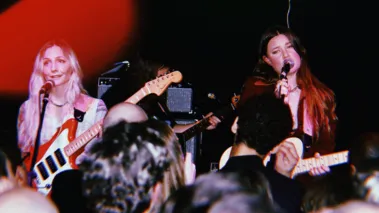
Indie labels often prioritize artistic integrity over commercial success, offering musicians the freedom to explore unique sounds that might not align with mainstream tastes. This has led to a shift in the music industry's approach to creativity and marketing. Indie artists now leverage social media and digital platforms to reach fans directly, bypassing traditional distribution methods and building engaged, global audiences. While some musicians remain independent to retain full control, others may sign with major labels, carrying the indie ethos into the wider commercial music scene.
What is a Digital Audio Workstation (DAW)?
A Digital Audio Workstation (DAW) is a software application used for recording, editing, mixing, and producing audio files. It functions as a comprehensive platform for musicians, producers, and sound engineers to create and manipulate sound, offering tools for everything from arranging MIDI tracks to finalizing a polished mix. Popular DAWs include Ableton Live, Logic Pro, and FL Studio, each offering unique features that cater to different workflows and music production styles.
The widespread adoption of DAWs has revolutionized the music industry by drastically changing how music is created and produced. They’ve made music production more accessible, allowing anyone with a computer to record and produce high-quality music from their home studio. DAWs have also increased the efficiency of music creation, enabling artists to experiment with sounds, edit recordings seamlessly, and finalize tracks more quickly than traditional methods allowed. This has encouraged greater creativity, with artists freely blending genres and pushing sonic boundaries. Additionally, the integration of DAWs with social media platforms has made it easier for musicians to share their work, gain feedback, and build global audiences, reshaping the relationship between artists and their fans.
How Indie and the DAW Have Changed Music
The Sound
For much of music history, creating a song meant musicians had to rely on live instruments. In the 1990s and earlier, genres like rock, jazz, and hip hop had distinct sounds defined by these traditional methods. Rock music was built on drums, bass, vocals, and loud guitars, creating a raw energy that became a cornerstone of the genre. Whether it was the power chords of 80s rock or the twangy tones of country, the emphasis was always on live instrumentation.
Similarly, jazz relied on brass, woodwinds, and rhythm sections, with improvisation playing a central role in its sound. The spontaneity of jazz was grounded in real-time performances by skilled musicians, and no two shows were the same. Hip hop, in its early years, focused on turntables and breakbeats, sampling bits of music and rearranging them into new compositions. For the first two decades, its production was limited by the technology available, with small samples and loops forming the backbone of the tracks.
Then came the rise of Digital Audio Workstations (DAWs), which revolutionized music production. DAWs eliminated these recording limitations, enabling artists to layer countless instruments, sample sounds endlessly, and manipulate audio in ways never before possible. The ability to slice, edit, and rearrange sounds with precision opened up entirely new creative avenues.
Take the following two hip hop songs as examples. "Check the Rhime," released in 1991 by A Tribe Called Quest, features a simple composition typical of their style: a breakbeat, bass line, and a short jazz horn sample that loops during the hook. In contrast, "FE!N" by Travis Scott offers a more modern sound with programmed drums, layered bass, and a variety of synthesized rhythms that would have been challenging to create with the technology available in 1991. Both are excellent tracks, showcasing very different recording compositions due to technological advancements over the past 30 years.
DAWs also allowed musicians to experiment with new sounds and patterns, like in "FE!N". Artists are no longer required to be in the same studio to collaborate on songs. They can share files, exchange ideas, and work on tracks from anywhere in the world. As a result indie artists collaborate regardless of geographical distance or timezones, fueling music communities and connections across the globe.
With DAWs, songs are created, edited, and perfected in a fraction of the time it once took. While bands in the 1990s spent $50 to $500 per hour to record in a professional studio, Indie artists today no longer need expensive studio time or large teams to create their music. They experiment endlessly, remix ideas, and release music more quickly than ever before, often from the comfort of their own homes.
Accessibility and Efficiency
When DAWs first emerged, they were basic tools with limited functionality. Early versions could handle simple recording and editing tasks, but they couldn't match the capabilities of a professional studio. To record an album or even a single, musicians had to be funded by a record label, or spend a lot of money out of pocket for a recording studio with professional equipment and sound engineers. This made it very difficult for bands to produce albums, and instead relied on writing songs with instruments and performing live.
Today DAWs have revolutionized the production process, allowing professional recordings to be done on a single computer. They provide everything from virtual instruments and advanced audio editing and mixing capabilities, all in one place. Popular DAWs like FL Studio, Ableton Live, and Logic Pro, are very affordable, allowing artists to produce music from the comfort of their homes.
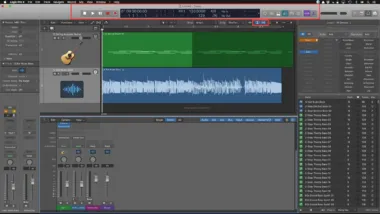
Being skilled with an instrument used to be the primary requirement for creating music. Today, anyone with a computer and a DAW can produce music without knowing how to play an instrument. This democratization of music creation has led to an explosion of indie music, as artists can now express themselves without relying on extensive technical skills or costly studio time.
Modern musicians experiment with different sounds and edits on the fly, instantly adjusting their tracks with just a few clicks. This speed makes it easier for musicians to work quickly, try out new ideas, and finalize songs without starting from scratch. For indie artists today, efficiency is critical, and collaboration invaluable. Paired with the ease of using DAWs, this has given rise to a new wave of innovative global indie music.
Creativity
Before the 2000s, major record labels controlled the music industry. They decided which artists were signed, which received airplay, and ultimately who succeeded and who didn't. This left little room for musicians to experiment or deviate from mainstream trends. As a result, many creative voices were stifled, and the industry remained largely homogeneous.
DAWs and indie artists have reversed this, making music production, creativity and experimentation more accessible than ever before. Billie Eilish, alongside her brother and producer Finneas, have made the most of this creative freedom, crafting breakout albums entirely from a home studio. Combined with a minimalist touch, unconventional vocal techniques, and introspective lyrics, we recently identified her as one of our top 3 most popular artists today.

Marketing and Social Media
Billie Eilish's success was also amplified by her visual creativity, using her social media presence to relate to younger fans. Social media has dramatically shifted how music is marketed and consumed. In the past, artists had to rely on radio stations and record labels, which controlled production, marketing, radio airplay, and exposure on TV. Today, artists like Eilish control their own destiny.
Indie artists today connect directly with their audience via platforms like Instagram, YouTube, and TikTok. These tools allow artists to release content on their terms and engage with fans instantly, fostering a personal connection, and the ability to go viral, creating significant advantages for unknown artists and musicians on a tight budget. A catchy tune or creative video can spread across social platforms overnight, potentially reaching millions, with little or no marketing budget.
Indie musicians also have access to various marketing tools like crowdfunding, direct-to-fan sales, and streaming platforms. Services like Spotify and Bandcamp let artists distribute music independently, while providing valuable listener data to inform better marketing decisions.
The rise of indie music and digital audio workstations has transformed the music landscape. Listeners can now access any song with a tap, while artists are overcoming barriers to production, marketing, and creativity. Although challenges remain, these advancements have democratized the industry, empowering musicians to express themselves and reach global audiences like never before. As technology continues to advance, we can anticipate even greater innovations, with today's tools and artists shaping the music of tomorrow.

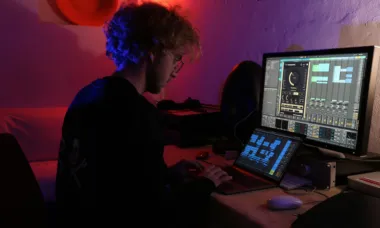
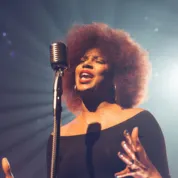
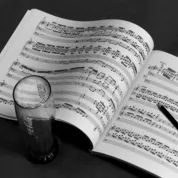
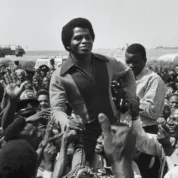
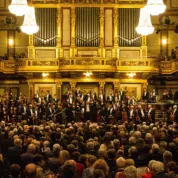

Leave a Reply!